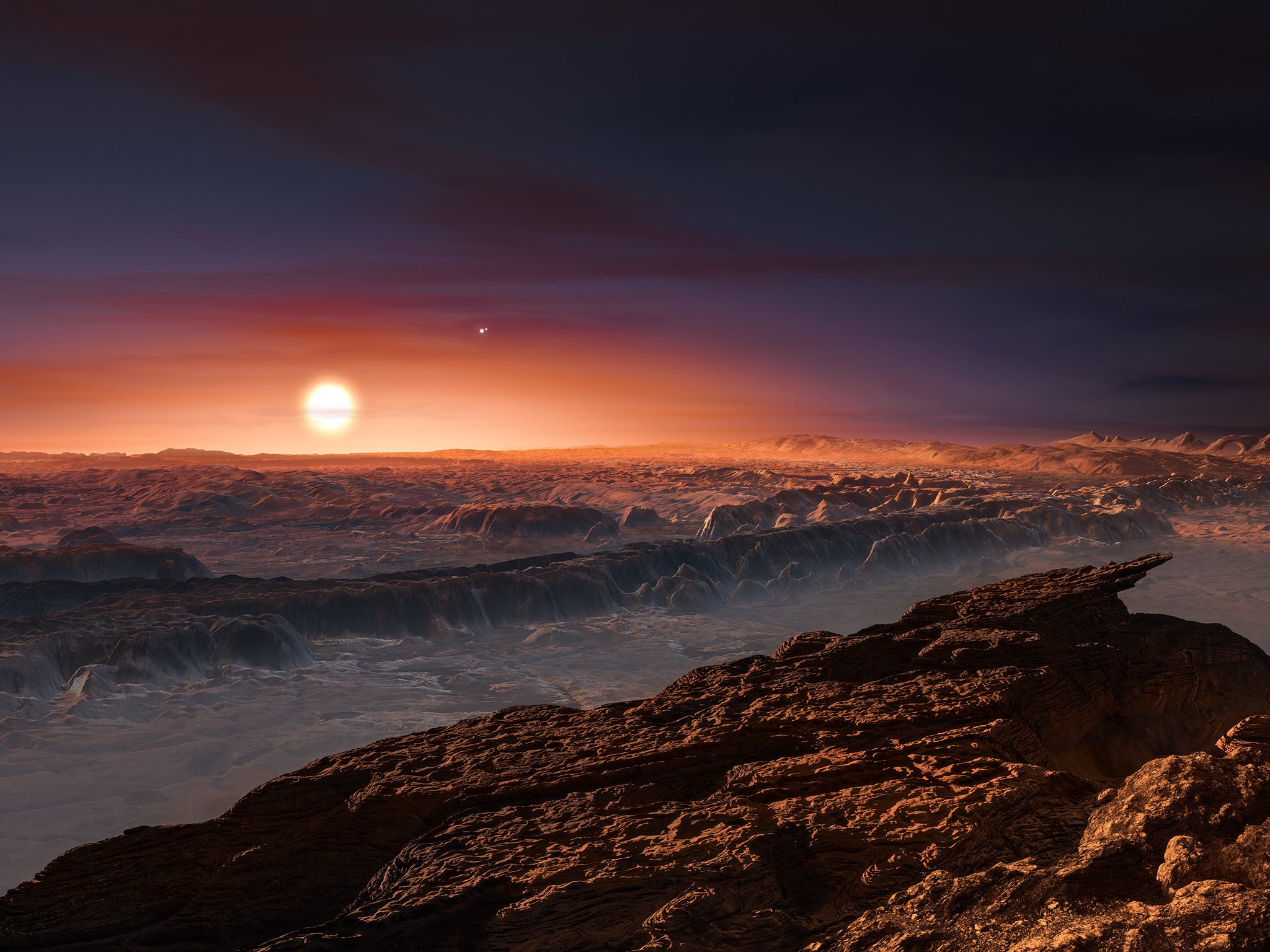Hidden planets may surround closest star to our Solar System, astronomers discover
Scientists find dust cloud around Proxima Centauri and believe there may be two more - and more planets - yet to find

Your support helps us to tell the story
From reproductive rights to climate change to Big Tech, The Independent is on the ground when the story is developing. Whether it's investigating the financials of Elon Musk's pro-Trump PAC or producing our latest documentary, 'The A Word', which shines a light on the American women fighting for reproductive rights, we know how important it is to parse out the facts from the messaging.
At such a critical moment in US history, we need reporters on the ground. Your donation allows us to keep sending journalists to speak to both sides of the story.
The Independent is trusted by Americans across the entire political spectrum. And unlike many other quality news outlets, we choose not to lock Americans out of our reporting and analysis with paywalls. We believe quality journalism should be available to everyone, paid for by those who can afford it.
Your support makes all the difference.Astronomers are investigating whether Proxima Centauri, the star nearest our solar system, may host an entire system of planets after they discovered it was surrounded by belts of dust.
The find suggests our nearest stellar neighbour could harbour a cloud of orbiting asteroids and potentially planets.
One Earth-like planet was discovered orbiting the red dwarf last year. Dubbed Proxima b, it resides in its star’s habitable zone and is roughly the size of our own world.
Enrique Macías was one of a team of astronomers who used Chile’s Atacama Large Millimeter Array (Alma) telescope to detect the debris.
He told The Verge: “So we think that whenever there is a planet around a star, there’s going to be some kind of asteroid belt as well.
“It’s just debris from the formation of the system. That’s what we were looking for.”
There may be up to three dust regions, he added. He said he was confident of discovering further planets.
The total mass of Proxima Centauri’s known dust belt is a small fraction of Earth’s and is very cold, at –230C.
Dr Guillem Anglada-Escude led the 30-strong team that discovered Proxima b in 2016.
The Queen Mary, University of London academic said: “We hope these findings inspire future generations to keep looking beyond the stars. The search for life on Proxima b comes next.”
As the closest star outside our solar system, about 4.25 light years away, Proxima Centauri has been discussed as a potential destination for Earth’s first interstellar probes.
One contender includes Breakthrough Starshot, a project to create a light-sail spacecraft that could perform a flyby of the planet on its way to document the wider Alpha Centauri system.
Join our commenting forum
Join thought-provoking conversations, follow other Independent readers and see their replies
Comments